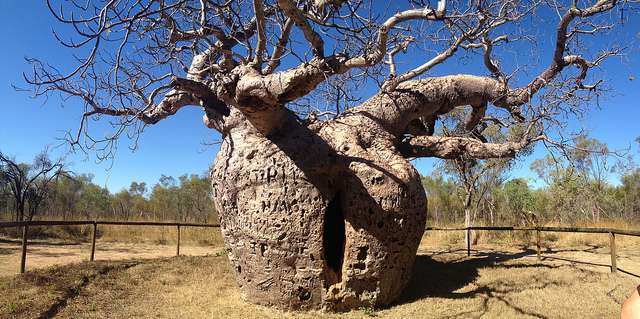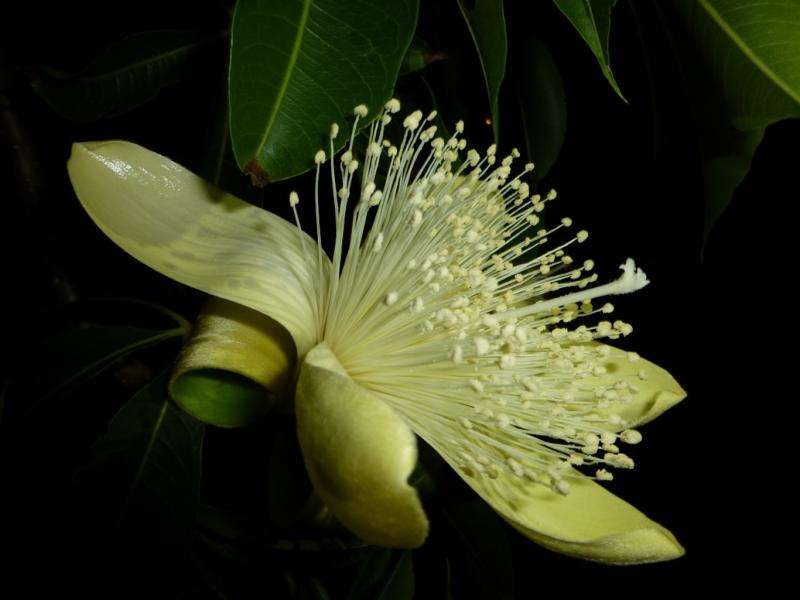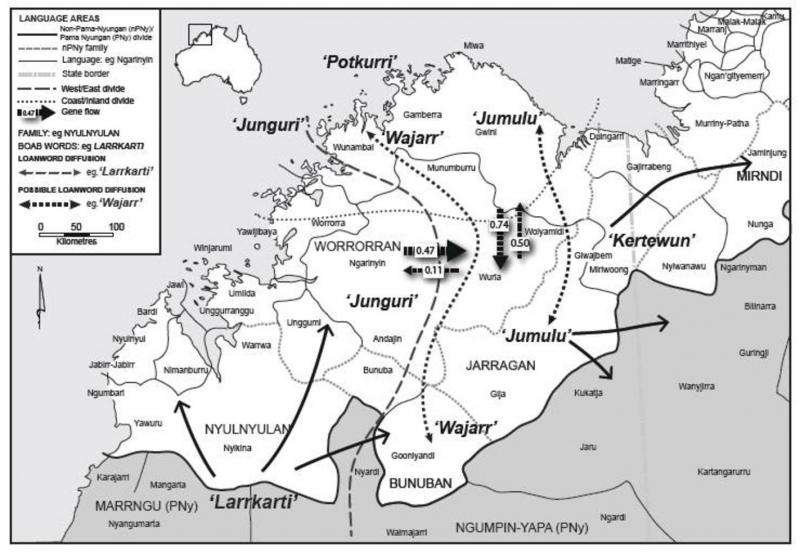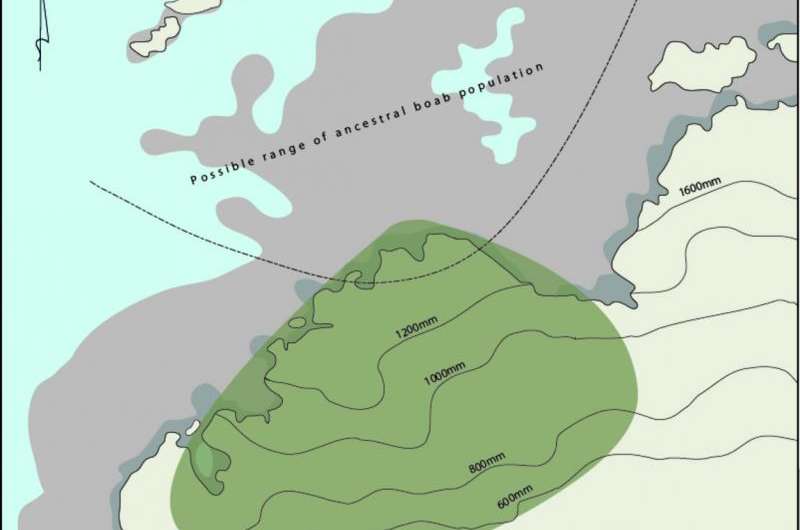Legend tells that huge hollow boabs were used as prisons in north west Australia. Credit: Robyn Jay/Flickr, CC BY-SA
Baobabs, the iconic bottle trees of Africa and Madagascar, have a single relative, the boab, living in the Kimberley region of northwest Australia. No one knows when and how the boab came across from Africa to Australia, or why its natural range is limited to this region.
In a study published recently in PLOS ONE, we solve one part of this mystery by showing that ancient Aboriginal peoples were responsible for spreading the boab in the Kimberley.
The boab mystery
An early hypothesis was that baobabs existed in parts of the supercontinent of Gondwana, which split up and became Africa, Madagascar and Australia more than 50 million years ago. This was not very convincing because, for one thing, peninsular India was part of that massive continental break-up, but does not have any of its own baobab species.
Second, as bio-geographer Patrick Armstrong has pointed out, Australia hasn't always been where it is now. It was closer to the South Pole for a long time after the split, and drifted north to its present position some 30 million years ago. The extreme climate variations during this long period would have pretty much killed off the baobab.
The Gondwana hypothesis was effectively tossed out by botanist David Baum, when he did a genetic analysis of baobab species from Africa, Madagascar, and Australia. He found that the three major branches separated just over 6 million years ago, long after Gondwana had split up.
With this theory ruled out, the current one is that the boab's ancestor floated across the Indian Ocean and landed in northwest Australia, before adapting to its new home and evolving into a new baobab species.
Another hypothesis recently put forward by scientist Jack Pettigrew is that human ancestors in Africa valued the baobab fruit as food and spread the seeds wherever they went. When they migrated out of Africa some 70,000 years ago, they carried the fruit pods with them and introduced the boab's ancestor when they arrived in northwest Australia. The available evidence from the genetic analysis of baobabs, however, does not support this scenario.
Boabs flower during the wet season. Credit: Haripriya Rangan
Clues in genes and words
Our study examined the genetics of Kimberley boabs to see whether there was any variation across their natural range. There are distinct biological barriers in the Kimberley that have influenced the evolution of mammals such as rock wallabies. We expected similar patterns of variation in the boabs assuming that they had spread by floods and animals.
The results showed the opposite: there was a lot of gene flow and thus very little variation between boabs in different parts of the Kimberley, despite the existence of barriers. This meant that boab seeds were being carried by some agent that was capable of moving across these barriers. Humans were the most likely ones, but there was no way of proving it just with the genetic data.
One way of tracking human agency is to look for linguistic clues. When people carry things from one place to another, they also bring their words for these things. If the things are new for the people who receive them, they will usually borrow the words for these and modify them in their own languages. Or if they are already familiar with these things, they may just add the new word into their vocabulary.
Studies in Africa showed that there was a lot of diversity and borrowing of terms for baobabs between languages. So we decided to combine the genetic and linguistic data for boabs in the Kimberley and map them together to see what they would reveal.
When we mapped the patterns of boab gene flow and the movement of boab words between Aboriginal languages of the Kimberley, we were amazed by how closely they corresponded with each other. The overlap between the two was strong enough to prove that humans were the main agents responsible for dispersing the boab in northwest Australia. Evidence of boab seed and pod remains from other studies of Aboriginal archaeological sites in the region confirmed it further.
But, then, another question came up: if humans were the main agents, why were boabs limited mainly to the Kimberley?
Escaping rising waters
Two clues showed up from the genetic analysis: first, that the source for the present boab population was in extreme northwest Kimberley; and second, that there had been a genetic bottleneck or reduction in population between 6 and 17,000 years ago from which the present boabs had then expanded.
When we matched these clues with studies of climate change since the end of the last Ice Age some 20,000 years ago, a clearer picture of human movement and the spread of boabs emerged.
Gene flow and movement of boab words Credit: Rangan et al. 2015
During the Ice Age, the Australian continental shelf extended much further out to the northwest, just under a few hundred kilometres from Timor. Boabs would have been distributed mainly on the exposed shelf, and Aboriginal groups living in these areas would have used them. When the Ice Age ended and sea levels rose, the boabs on these areas would have drowned by the flooding.
With sea waters pushing them further inland, the Aboriginal groups living in these areas would have carried boab fruit pods with them as they moved into areas of central and eastern Kimberley. They would have settled here and introduced the boab tree and words to other Aboriginal groups.
So, if you ever visit the Kimberley region of northwest Australia, take some time to look at the boabs in the landscape and see what new clues they provide. You might help us solve the rest of the mystery of how they got here from Africa.
How boabs came inland Credit: Rangan et al. 2015
Source: The Conversation
This story is published courtesy of The Conversation (under Creative Commons-Attribution/No derivatives).
![]()



























